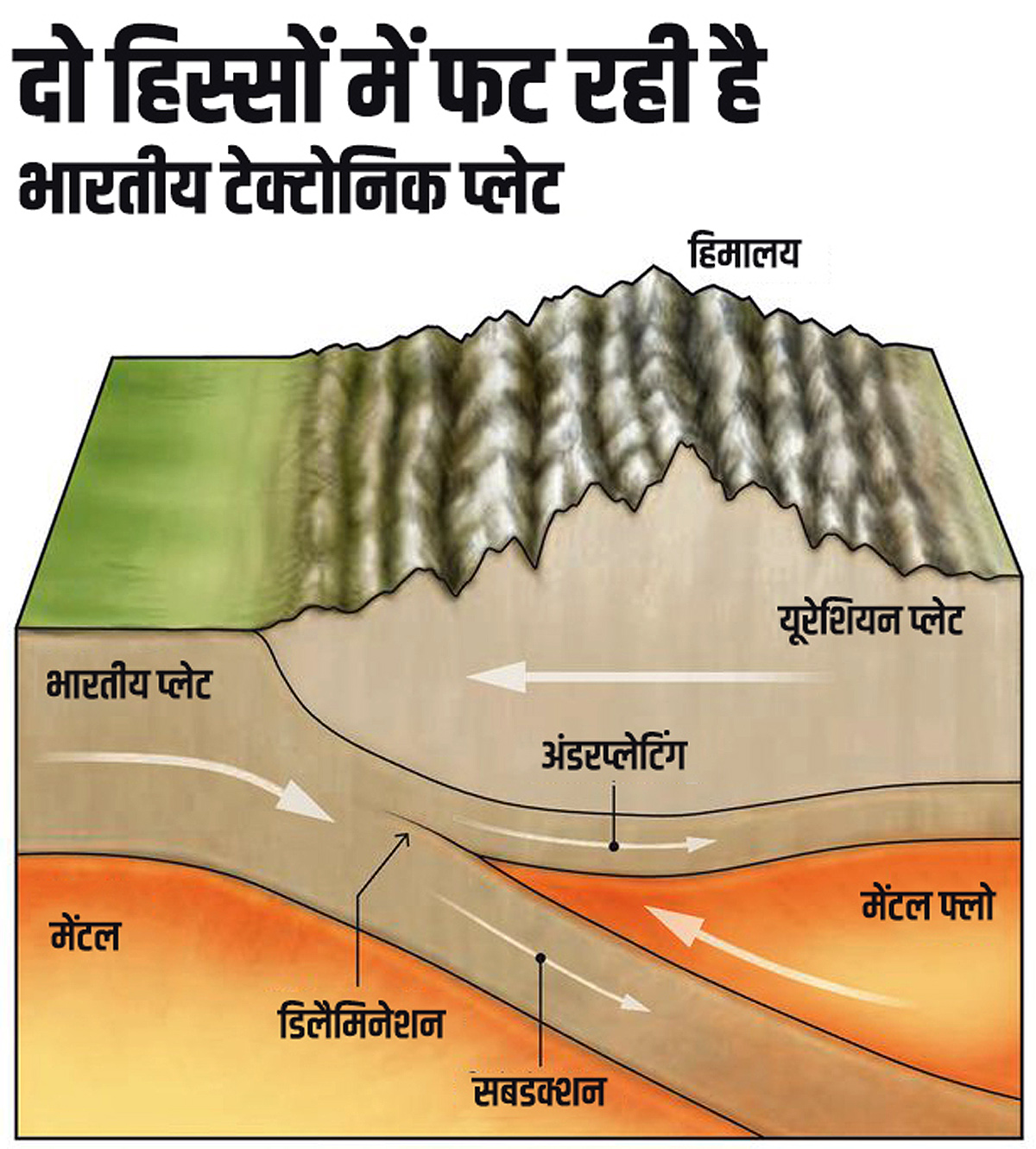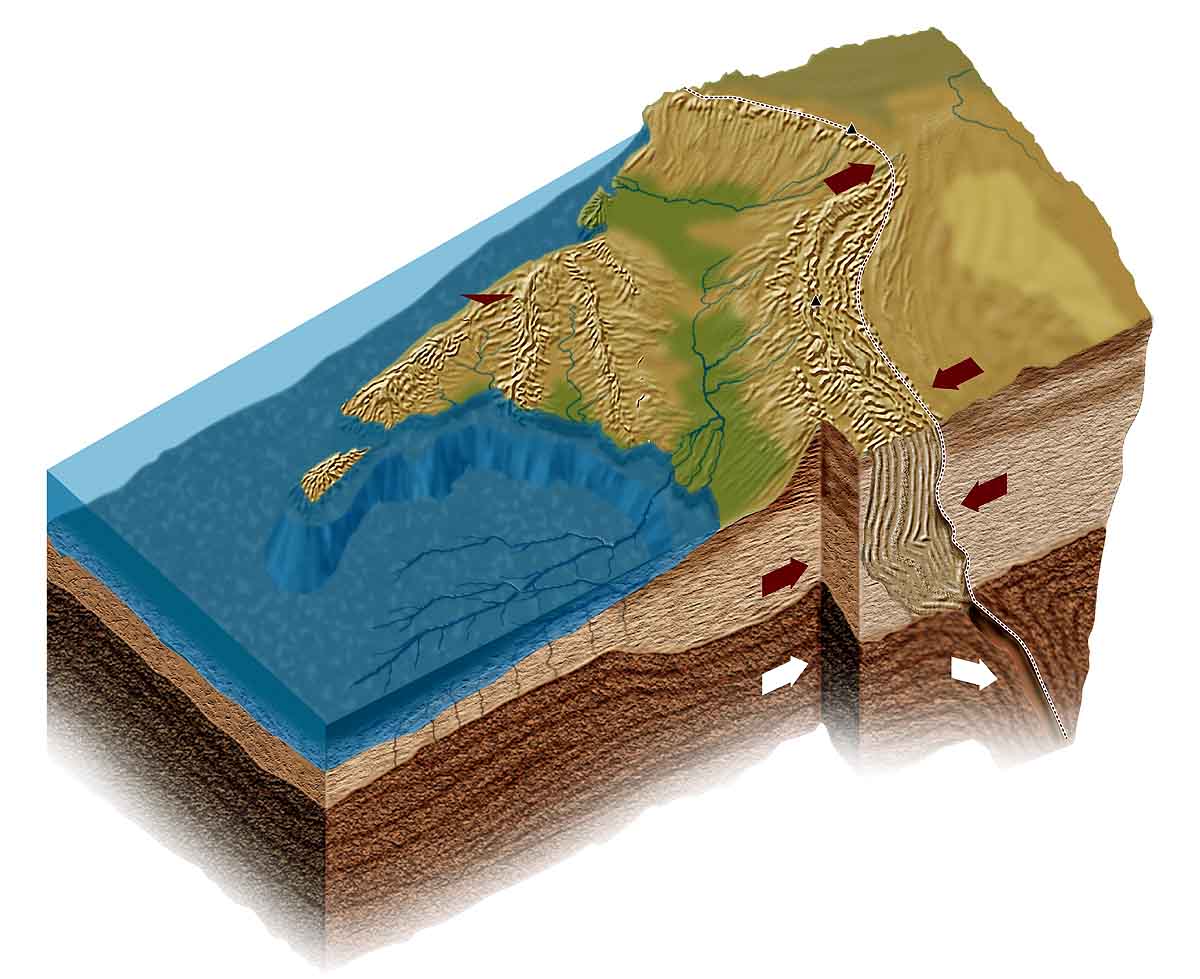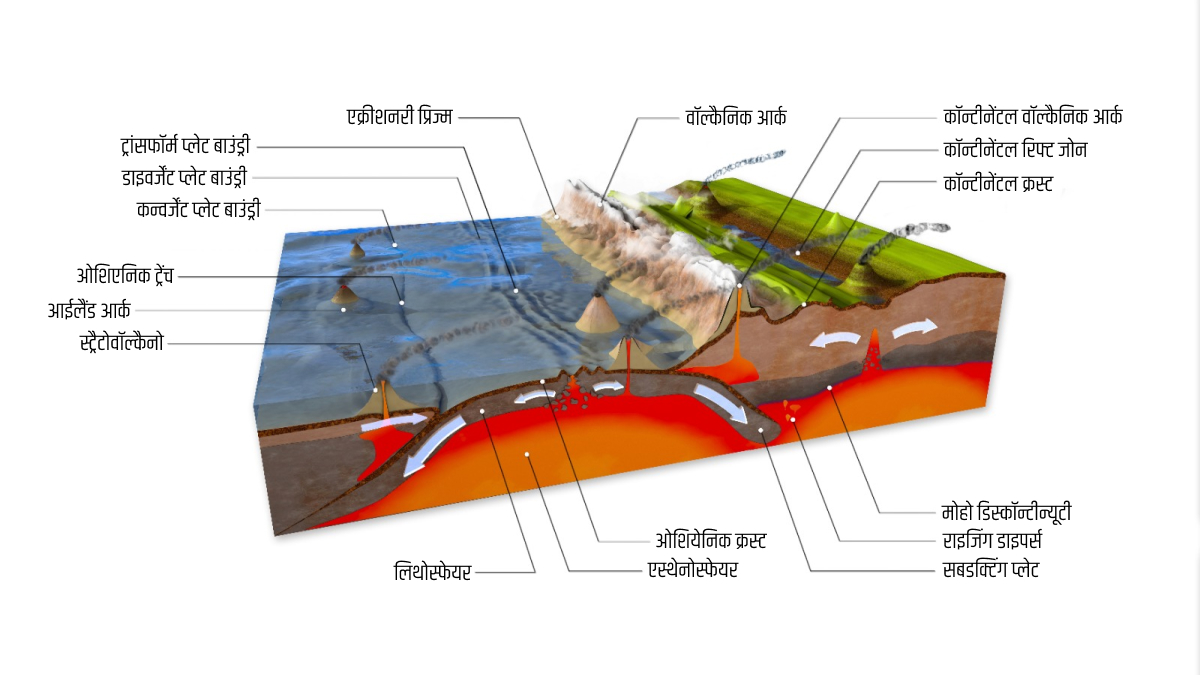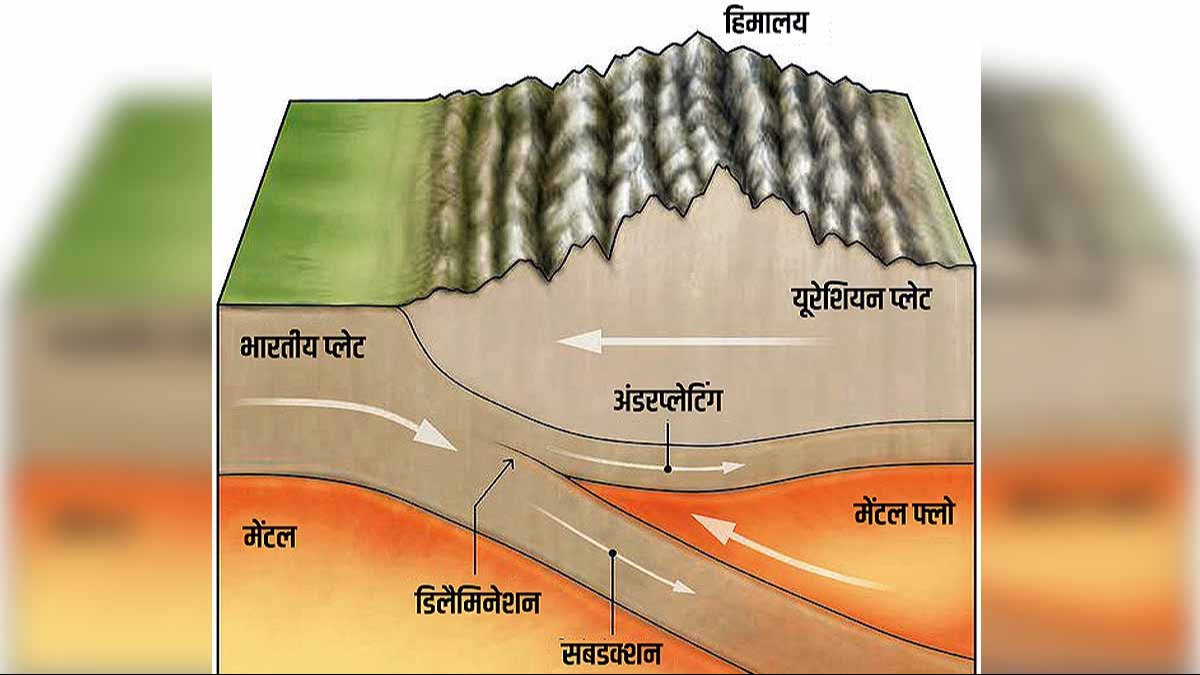Begin with understanding the graphics below... and then delve into the full story.
The graphics highlighted by the white arrows delineate the Indian Plate's pressure points against the resisting Eurasian Plate. This interplay constructed the Himalayas, yet below lies 'underplating,' with the Indian Plate being subsumed by its Eurasian counterpart.

Source: aajtak
'Delamination' reveals the Indian Plate's bifurcation; its top layer adheres to the Eurasian Plate while the other is descending into the mantle, towards the infernal depths. This delamination crack spans anywhere from 100 to 200 kilometers, with notable mantle flow displayed in the visualization, directing towards the Indian Plate.
The scientists have spoken...
The directional flow of energy, as illustrated, is brewing a tempest under the surface. This amassed energy, when unleashed, can provoke formidable earthquakes, contributing to the increasing height of the Himalayas. While the surface movement appears slow, an underground battle wages on.
The clash between the Indian Tectonic Plate and the Eurasian Plate goes back 60 million years when India was not part of the continent but an island, ultimately crashing into Eurasia. As these lands collided, the Himalayas were forged, revealing a surface majesty and secret subterranean phenomena.
Scientists believe that the subduction of the Indian Plate under the Eurasian Plate, a phenomenon known as 'Delamination,' is causing the plate to fissure. However, the superficial Eurasian Plate is ascending and expanding, which contributes to the Himalayas’ elevation.
Potential for Dreadful Earthquakes in the Himalayas
Utrecht University's geodynamicist, Duve van Hinsbergen, shares that the interaction between continents is unsettlingly mysterious yet profoundly disturbing. Should this crack propagate swiftly, the Himalayas might brace for an onslaught of earthquakes.

Source: aajtak
The Indian Plate's Gradual Descent into the Abyss
Monash University's geodynamicist Fabio Capitanio warns that we are merely witnessing the prelude; the full scenario has yet to unfold. Ongoing studies endeavor to amass profound insights into the geological instabilities. This unprecedented division of such a massive tectonic plate as that of India suggests a grim prelude to further disruptions. We are observing a continental plate, remarkably thick, inching towards the underworld.
China's Plate Applies Crushing Force to Indian Plate
Geologist Peter K. DeCelles from the University of Arizona emphasizes the importance of focusing on the genesis of the Himalayas for a comprehensive understanding of the Indian Plate's fracture. Charting the entire 2500-kilometer stretch beneath the Himalayan range is crucial to fathom the plate's uneven profile – thin at places and considerably thick at others – continually being thrust into the larger Eurasian Plate, which exerts massive force upon it.
Indian Plate Undergoes Tectonic Struggles
Stanford University geophysicist Simon Klemperer likens the Indian Tectonic Plate to a piece of fabric, stretched and pulled from all sides. Particularly troubling is the subduction zone beneath Bhutan where the Indian Plate is experiencing profound trauma.

Source: aajtak
The Greater Danger of Helium-3 Extraction...
Helium-3 isotope traces have been found in Tibet's various water sources, particularly over a 1000-kilometer stretch containing around 200 natural reservoirs. The emergence of helium from the depths reveals that the Indian Plate's mantle-bound trajectory is culminating in its fragmentation, as similar incidences are reported along Bhutan's eastern frontier.
Seismic Wave Studies Disclose
The lower section of the Indian Plate is endlessly plunging into the mantle, particularly beneath Tibet. This study, employing seismic waves aimed at the collision zone of the plates, validates that the Indian Plate is fissuring.
Extent of the Indian Tectonic Plate's Fracture...
Lehigh University seismologist Anne Meltzer reveals that the fracturing event transpires 200 kilometers below the surface. Rocks from the mantle region have surged upwards to a height of 100 kilometers atop the Indian Plate, pointing towards dramatic geographical alterations that await in the millennia to come.

Source: aajtak
Insights Post-Study
The world is aware that the Indian Plate relentlessly pushes the Eurasian Plate northward. A 3D S-Wave Receiver study beneath the Himalayas unveiled jaw-dropping details.
The Revelations are...
- A Lithosphere-Asthenosphere boundary 90 degrees down India's southern edge. Turbulence abounds at this juncture. - Cracks initiating from the Yarlung Zangbo rift, extending 100 km northward, lie beneath Tibet. - Eastward, beneath India's mantle, the surface separation intensifies due to gravitational effects. - Helium isotope intensity has surged within the Yadong-Gulu and Kona-Sangri rifts, hinting at upwelling from Earth's core. - Frequent earthquakes in the region signify the hastened fracturing of the Indian Tectonic Plate.




